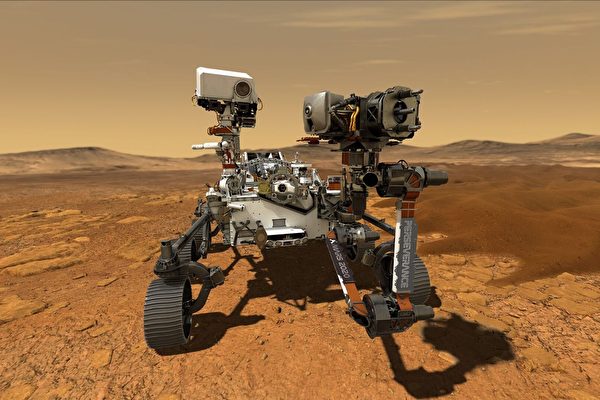The evidence provided by NASA’s Perseverance rover on Mars indicates the existence of discharge phenomena in the Martian atmosphere, known as “mini lightning.” This significant discovery has opened up a new research field in Martian science.
Scientists published a research report in the journal Nature on Wednesday (November 26), showing that the SuperCam instrument carried by the Perseverance rover captured these discharge phenomena in audio and electromagnetic recordings. This is the first documented evidence of electrical activity in the thin Martian atmosphere.
Researchers analyzed 28 hours of microphone audio recorded by the Perseverance rover over two Martian years, detecting 55 occurrences of “mini lightning,” mainly happening during dust storms and dust devils. Almost all events occurred on the windiest days on Mars, accompanied by dust storm or dust devil activities.
Baptiste Chide, a planetary scientist at the French Institute of Astrophysics and Planetology and the lead author of the study, stated that “these discharge phenomena represent a significant discovery that has direct implications on the atmospheric chemistry, climate, habitability, as well as future robotic and human exploration of Mars.”
Chide mentioned that scientists have been searching for electrical activities and lightning on Mars for nearly half a century. The Martian atmosphere is more prone to discharge and sparks due to contact between dust and sand particles compared to Earth’s atmosphere.
“This opens up a whole new research field in Martian science,” Chide said, mentioning the chemical effects that the discharge may bring.
The electrical arcs, only a few centimeters in size, occur within 6 feet (about 2 meters) from the top of the rover’s mast where the microphone is located.
The spark produced by these electrical arc discharges – similar to static electricity on Earth – is audible amidst the noise of strong winds and dust particles hitting the microphone.
“It’s like mini lightning on Mars,” Chide said, “These phenomena are caused by the friction of tiny dust particles rubbing against each other, accumulating electrons, and then releasing the charge in arcs just a few centimeters long, accompanied by audible shock waves.”
Scientists have long been speculating about the presence of electrical activities in the Martian atmosphere.
“What we observed is the result of our very sensitive instruments conducting long-term observations, allowing us to detect very small discharges, with energy equivalent to that of a car ignition.” Ralph Lorenz, a planetary scientist at Johns Hopkins University Applied Physics Laboratory and a co-author of the study, clarified that the “mini lightning” found in the research is not lightning in the conventional sense.
This is not the first time the Perseverance rover has transmitted sounds from Mars. Previously, Earthlings have heard the creaking sound of the rover’s wheels rolling on the Martian surface. Since 2021, this rover has been conducting exploration near the Jezero Crater in the northern hemisphere of Mars.
(Partially referenced from Reuters.)

